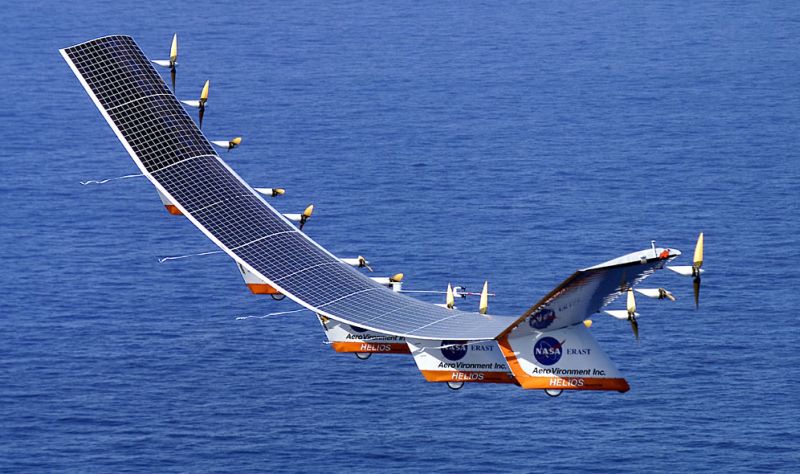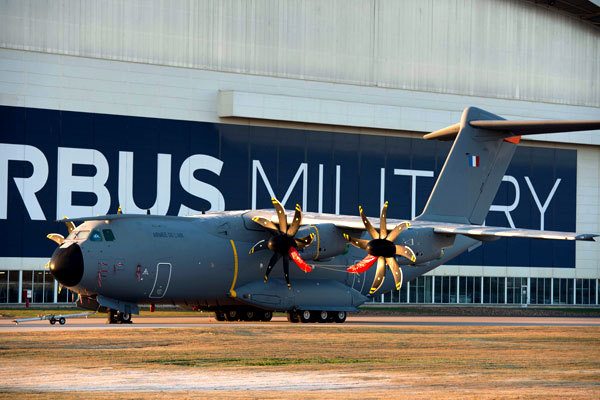Airbus Defence and Space has announced that the Zephyr 7 High Altitude Pseudo-Satellite (HAPS) has just completed its most demanding mission to date and thus set a new benchmark in persistent, year-round operations for this class of Unmanned Aerial Systems (UAS).
The test consisted of over 11 days of non-stop flight, in winter weather conditions with a new primary payload, including flight controlled through satellite communications – three more benchmarks reached by Zephyr 7. HAPS run exclusively on solar power, which is used during the day to charge a battery that is used to power the flight through the night, so this flight in shorter days and longer nights was significantly more demanding than any previous one.
“During this most recent flight of the Airbus Zephyr, we successfully demonstrated a number of advancements that are critical to achieving the operational readiness of the technology and that increase its operational value for our customers,” said Jens Federhen, Head of the Airbus HAPS programme. “We have furthermore reached an important milestone in our regulatory roadmap.”
The flight, which was executed for the UK Ministry of Defence (UK MOD), was approved in controlled airspace, which required the close cooperation of the Military Aviation Authority (MAA), the Type Airworthiness Authority (TAA) and the Unmanned Aerial Systems (UAS) team of the MOD Defence Equipment and Support Group, leading to the Zephyr 7 being assigned its military registration, PS001 – the first Pseudo-Satellite registered.
“This is the first time that the UK’s military aviation authorities have expanded our well-proven procedures and regulations into the domain of these novel, long-duration pseudo-satellites,” said Group Captain Paul Lloyd of the TAA, “and it has been both instructive and encouraging to see how effectively the regulations and the Airbus approach to Zephyr were brought together to enable such an operation.”
Apart from flying a new primary payload, Jens Federhen highlighted the fact that for the first time, satellite communications had been used to control and monitor the aircraft. “The use of the SatCom link to control the aircraft beyond line of sight of the ground station is another critical aspect that we needed to test to move towards a pseudo-satellite form of operation where the Zephyrs can be controlled across the world from a central control station,” he said, also pointing out the fact that this helps to further reduce the cost of service which is already low compared to other means.
The flight was a breakthrough in terms of proving the year-round capability of the Airbus Zephyr, as Chris Kelleher, the Technical Director of the Airbus HAPS programme, said. “While Zephyr 7 holds the world record for flight endurance and has flown continuously ten times longer than any other UAV, all previous long duration flights have been carried out in the summer months when the longer days, shorter nights and better weather make flights significantly easier. This latest flight was undertaken in the Southern Hemisphere winter so the aircraft had to show it could remain operational through the longer nights, re-charge sufficiently in the shorter periods of daylight and cope with the harsher weather conditions. ”
This most recent flight allowed over 250 hours of flight testing of the Zephyr 7 prototype, which will now be used to refine the final design of Zephyr 8, the next-generation HAPS vehicle currently being developed by Airbus.
BACKGROUND INFORMATION
The Airbus Zephyr HAPS’ Longest and Highest Flight Ever
Since 2008, the Airbus Group has been working on High Altitude Pseudo-Satellites (HAPS). Running exclusively on solar power and flying above both the weather and conventional air traffic, these systems fill a capability gap between satellites and UAVs.
They are ideally suited for what we call “local persistence”. This means that HAPS have the ability to stay focused on a specific area of interest (which can be hundreds of miles wide) while providing it with satellite-like communications and Earth observation services over long periods of time without interruption.
Recognising the excellent fit with Airbus’ existing portfolio of space-based, airborne and terrestrial systems and services, we have created a “Nursery” project in which an integrated team of space and aviation experts has “incubated” a HAPS business addressing all of its technical, commercial and regulatory aspects.
This “incubator” builds on the assets and resources of the “Zephyr” programme that was initiated in the UK. The Airbus Zephyr holds several world records, including the longest flight duration without refuelling (14 days, i.e. 10 times longer than any other aircraft in the world) and the highest altitude (70,740 ft.).
In total, the Airbus Zephyr system has already clocked up over 850 hours of flight time at high altitude.
Airbus Defence and Space is a division of Airbus Group formed by combining the business activities of Cassidian, Astrium and Airbus Military. The new division is Europe’s number one defence and space enterprise, the second largest space business worldwide and among the top ten global defence enterprises. It employs some 40,000 employees generating revenues of approximately €14 billion per year.











